Our history - Always moving forward since 1878
Torghatten has a long and proud history. We've gathered some of our greatest events and achievements here.
1878
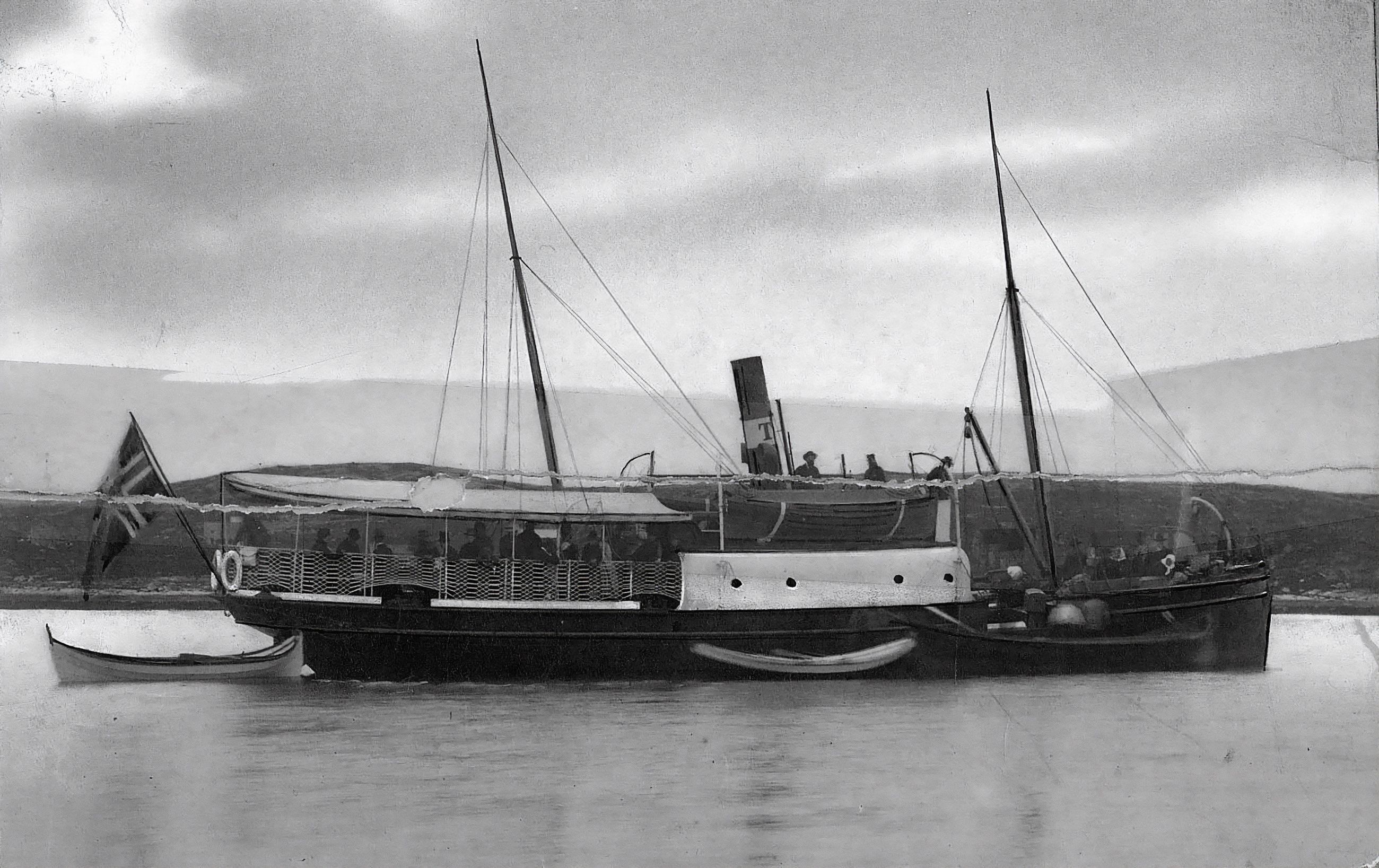
The steamship arrived: DS Torghatten was a beautiful sight for the people of South Helgeland.
The Beginning
The steamship company Torghatten Aktieselskab was founded on January 3 1878, by Ulrik Qvale from Kvaløy in Brønnøy, Peder Knoph from Terråk in Bindal, and P. Tønder from Rørøy. On 15 November, the steamship "Torghatten" arrived. Also known as "Dampen" - the new pride of the area. The boat was put into service in Sør-Helgeland, carried and delivered mail, and the rights to carry the postal flag.
1907
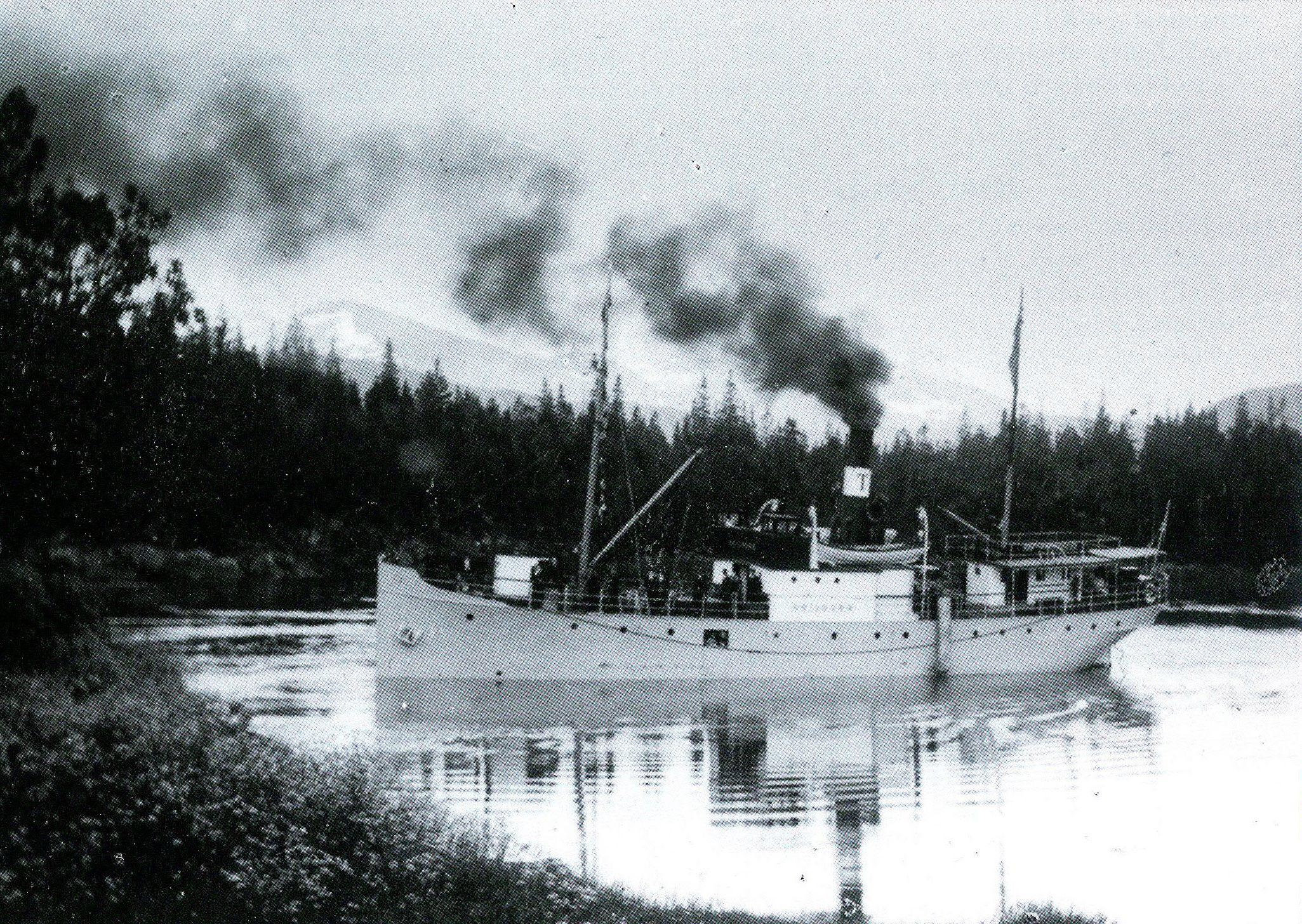
A beautiful ship: DS Heilhorn, photographed here in Heimen in Bindal.
Splendid Heilhorn
In 1907, an action committee led by Kristian Qvale, Alfred Holst, and Andersen Grimsø succeeded in pushing for a decision to acquire a new and well-equipped ship that could reach a speed of ten nautical miles. Ørens Verksted in Trondheim received an order worth NOK 82,000, which was no small amount in those days. Some would even characterize the optimism as "madness". Heilhorn became a beautiful ship with a modest chimney - as was the custom of the time – an open bridge and a smoking lounge aft with a small promenade on the roof and a large and splendid foredeck for livestock and passengers.
1913
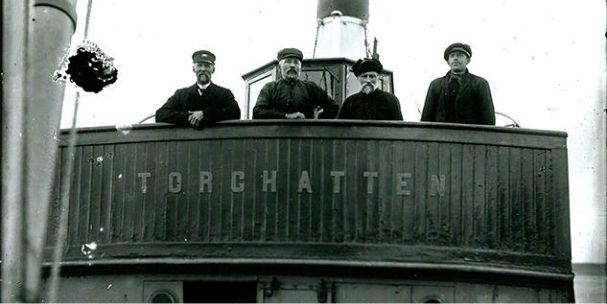
Here we see pilot Ditmar Hansen, Captain Helmer Andreasen, sailor Jens Nøstvik, and a passenger on the bridge of "Torghatten."
Name change
Dampskibet Torghatten Aktieselskab changes its name to AS Torghattens Dampskibsselskab / by Ulrik Quale, Brønnøysund.
1917
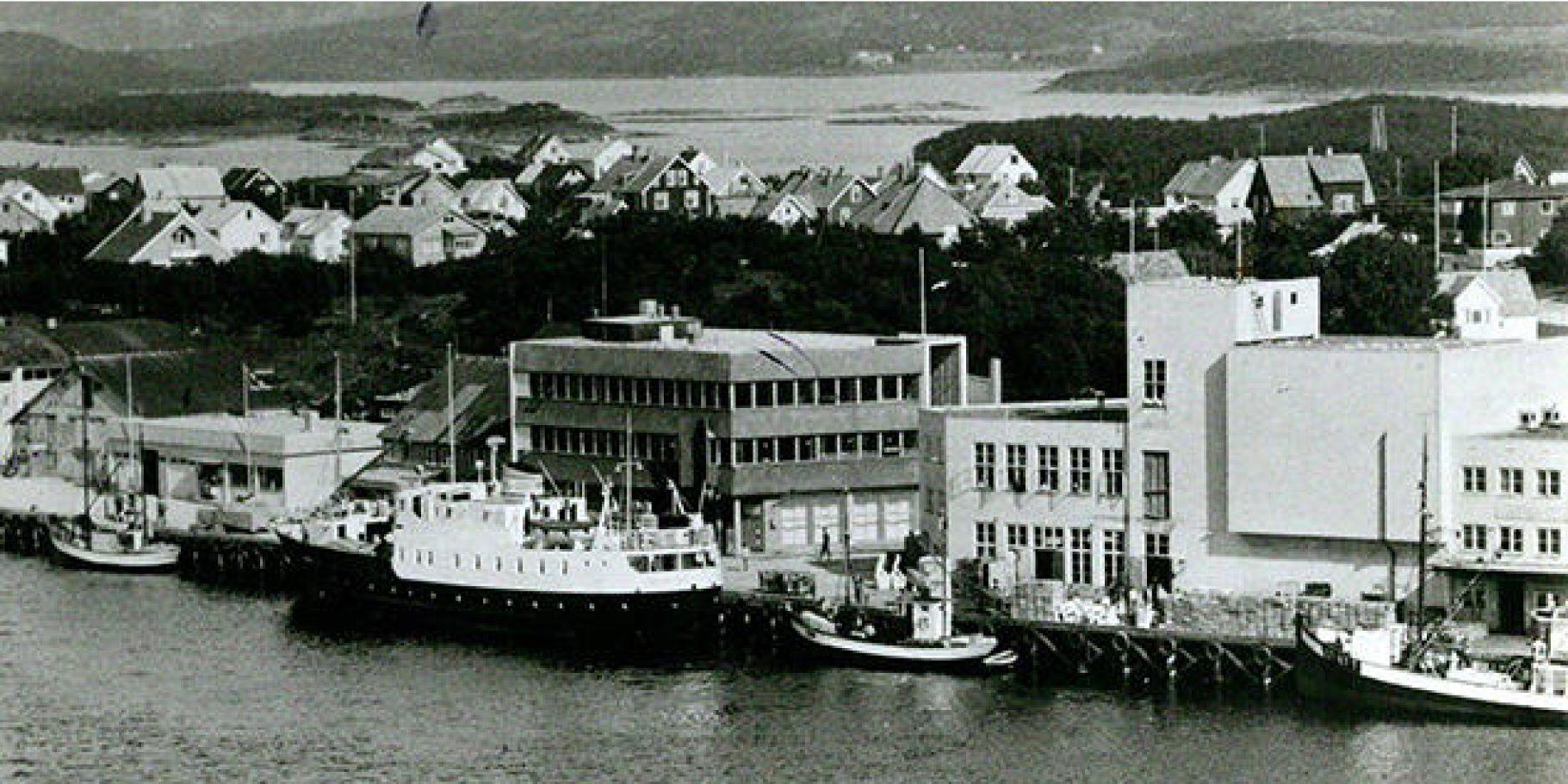
MS Torghatten at the dock in Brønnøysund sometime in the 1960s or 1970s.
Moving
The company moves from Kvaløen to Brønnøysund. Torghatten ASA's premises are located on the waterfront in Brønnøysund. The TD kiosk is located on the ground floor, and the headquarters are on the floor above.
1930
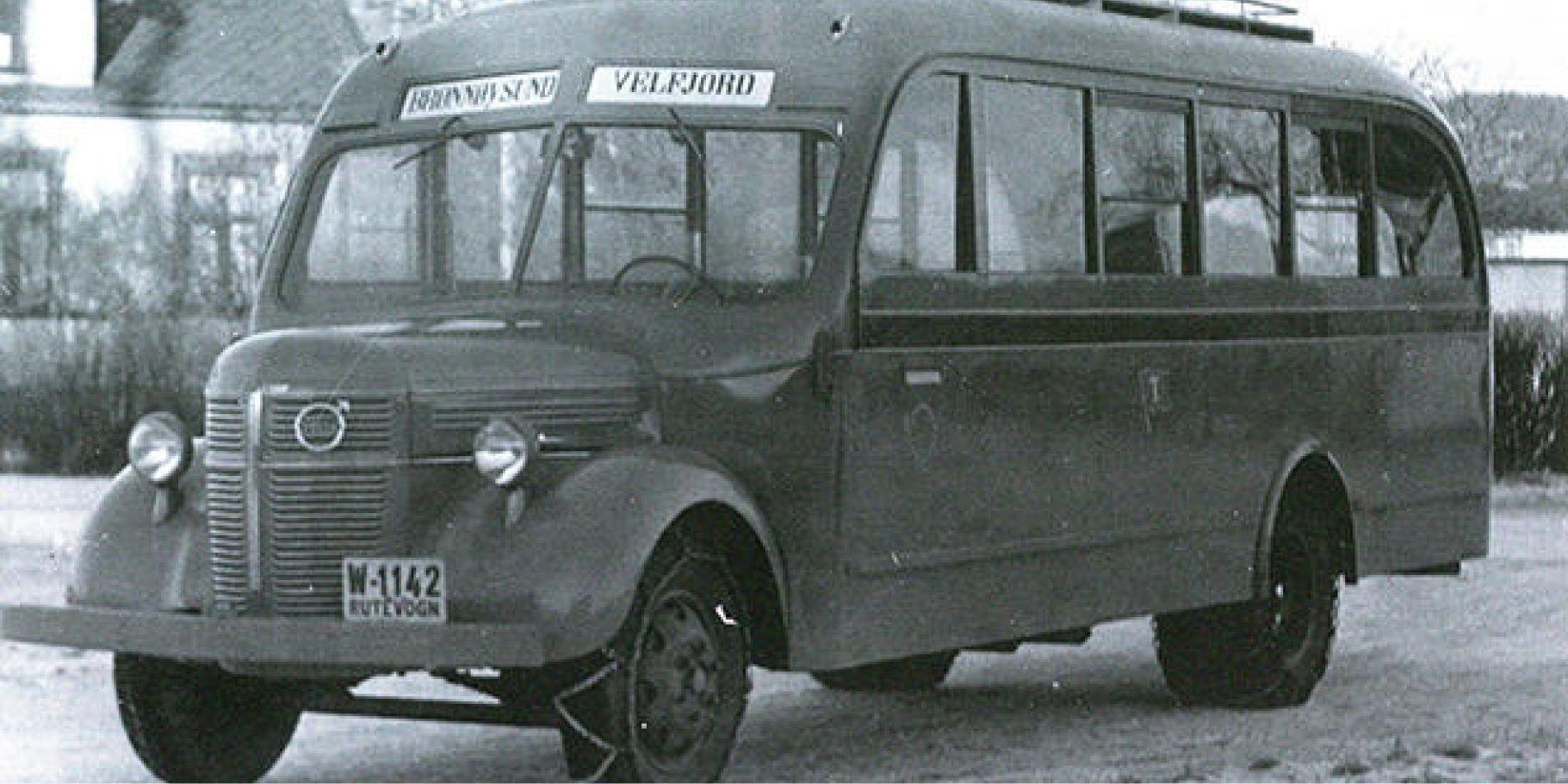
First car route
Torghatten's first land-based route starts with a car route from Brønnøysund to Vik in Sømna. It was a historic day when the company's first bus driver, Jon Nielsen, took the wheel shortly after the new year in 1930.
At that time, maritime transport was much more dominant, and bus and freight routes on land had to wait for better road conditions and only became more relevant in the years after World War II. Sør-Helgeland was lagging behind in terms of getting good enough roads to accommodate bus transport.
1939
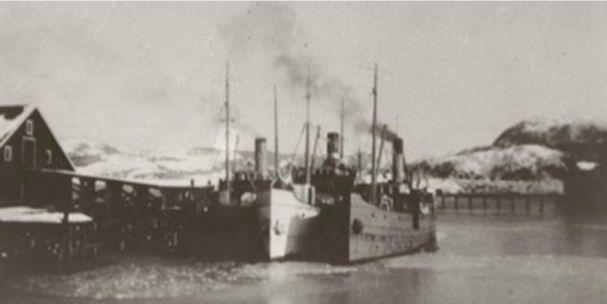
War
D/S Heilhorn was requisitioned in the fall of 1939 by the 2nd Naval Defense District, 14th guarding division. It was trained for guarding duties in Trondheim, equipped with a caliber 76 cannon on the foredeck.
Day and night on end, Heilhorn circled around along the Helgeland coast, looking for planes and ships. Something less reminiscent of a warship is probably never seen in naval history, but it served its purpose. And it even achieved a victory.
In Trondheim, the Germans had taken Nikolai Dahl's small fishing trawler "Albion" and sailed north with German troops and plenty of canned goods for the soldiers in Vefsn and Rana. On May 19, Albion anchored just inside Straumøyan outside Velfjorden and camouflaged itself with spring foliage and a freshly painted chimney.
That's when Heilhorn appeared on the scene followed by the large trawler "Honningsvåg". The cannons opened fire and ten minutes later, Albion was engulfed in flames and sank at once, while the two patrol ships sped northward again. Nine Germans survived, one died.
A victory? Yes, indeed a victory. At least the Germans in Vefsn and Rana didn't get all the black bread they were expecting.
1940
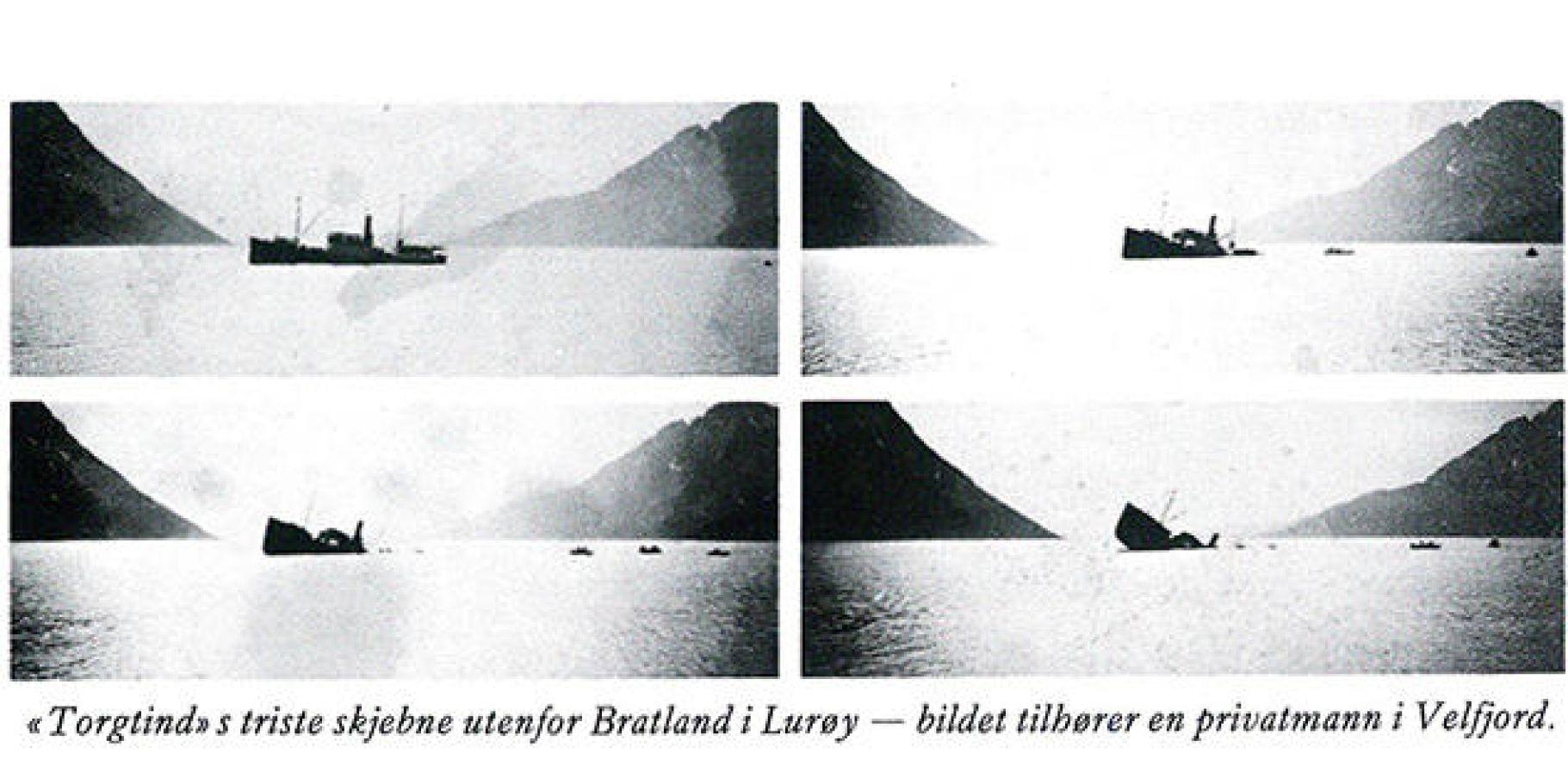
Torgtind's fate off Bratland in Lurøy. The photo belongs to a private individual in Velfjord.
Torgtind bombed
D/S Torgtind was ordered by the authorities to be moored in Storbørja at the innermost part of Velfjorden, in a relatively safe place. On 15 May 1940, the ship received orders to move further north. The company pointed out that the vessel was well hidden and that moving it would be risky.
The command post in Bodø nevertheless stated that moving it was an order and that the vessel should go as far as the Meløy district. The crew prepared the ship for departure, and on May 17, Torgtind left Storbørja on what would be its final journey.
Early in the morning on May 18, the crew spotted a German reconnaissance plane. The plane flew directly over the vessel and dropped incendiary bombs that missed their target. The ship was then moved to a new location, but around noon the same day, it was attacked again. This time, five bombers dropped a total of nine large bombs. The ship was heavily damaged and began to sink but remained afloat for some time due to its watertight compartments. The crew, consisting of six men, all from Brønnøysund, managed to escape from the ship at the last moment and sought shelter on land.
At 3:30 p.m. on the afternoon of May 19, Torgtind sank off Bratland in Lurøy, with the stern going down first. The vessel sank to a depth of approximately 30 meters. After the war, attempts were made to locate the boat for salvage, but it was discovered that an underwater landslide had occurred, and that the vessel was gone.
1952
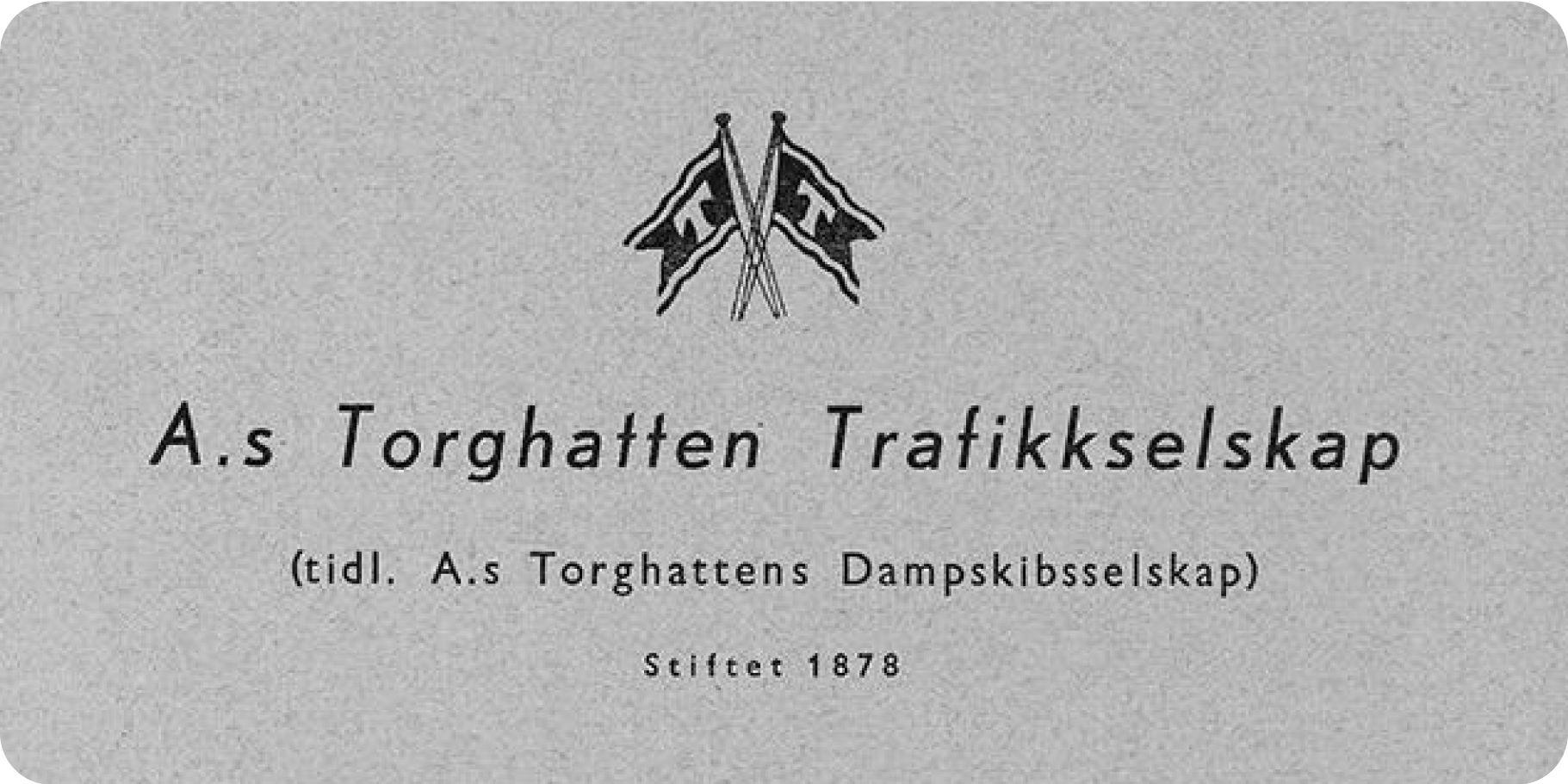
Name change
As long as roads were being built, the company was there with passenger and freight services. Eventually, the land-based part of the company became significant and important enough that the venerable Torghattens Dampskibsselskab became history. From 1952, the steamship company became a transportation company.
1957

Torghatten - boat and mountain with the same name.
First ferry route
The company's first ferry route begins. The work on establishing ferry route between Brønnøysund and Torgøyene began as early as in 1946, but it wasn't until 1960 that the newly built "Torget" came into operation. During the same period, the company's local fleet was modernized and new boats were built. "Vegtind" was launched in 1954, and the new "Torghatten" arrived in 1957.
In the mid-1950s, there was also a new era for ferry connections in Bindal. "Kjella" started operating between Vennesund and Årsandøy when the ferry terminals were completed in 1957. At this point, there was no ferry terminal at Holm, but the project was in its planning stages. In the following years, it also became increasingly relevant for the company to expand northward as ferry terminals were built in Vevelstad and Tjøtta. "Austra" was delivered in 1959, and in the same year, the ferry terminal at Holm was completed.
1979
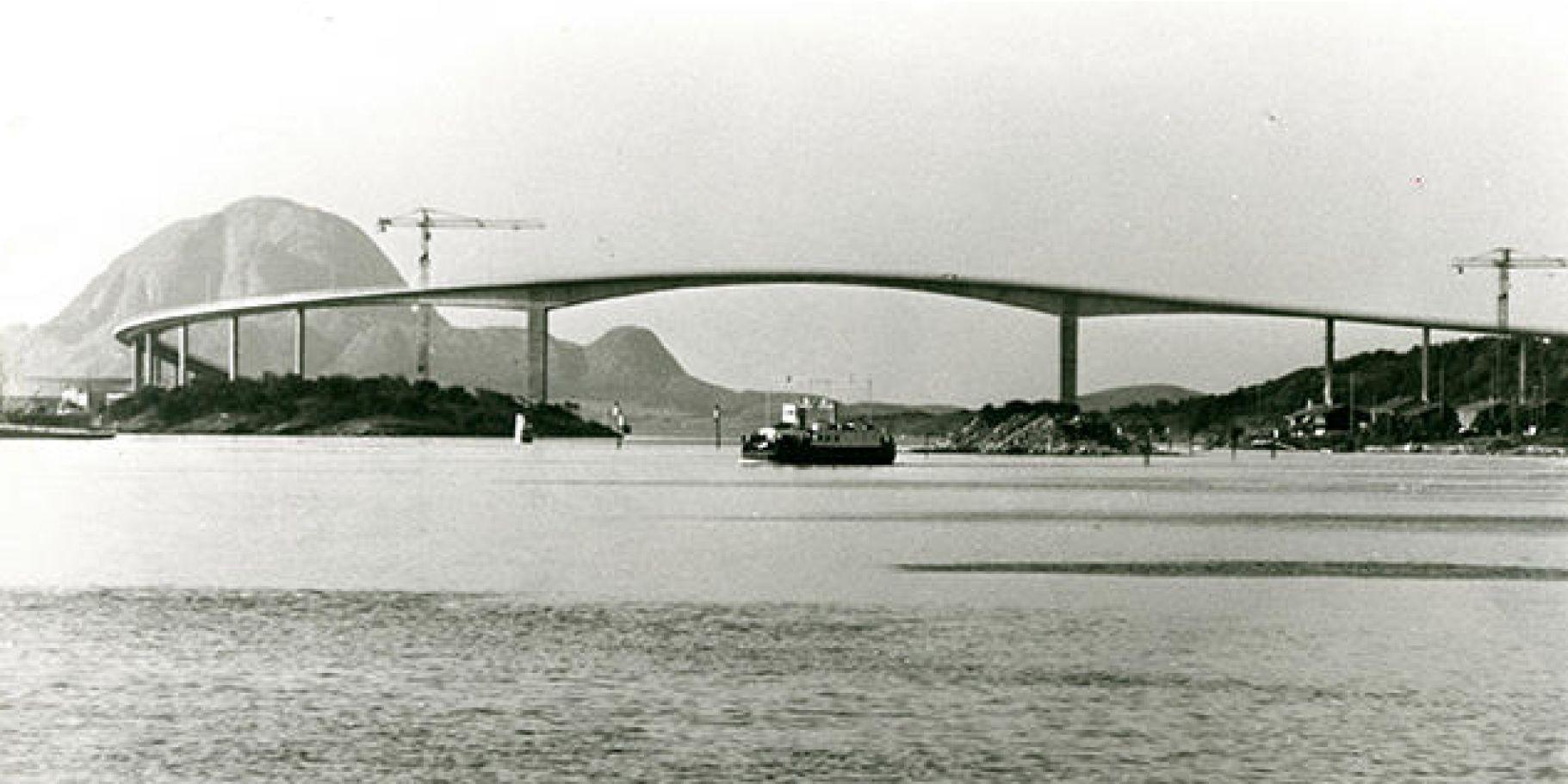
The ferry MF Torget on its last trip across Brønnøysundet in 1980.
The Brønnøysund Bridge
An important chapter in transportation for all of Sør-Helgeland was written when the ferry connection between Brønnøysund and Torgøyene became history, and the bridge over Brønnøysundet (the waters of Brønnøysund) came into use. 14 September was a significant day for the local population of Brønnøysund, as they could use the new connection for the first time. For Bindal, it was also a new milestone as a fixed road connection was established, allowing the Møllebogen-Årsandøy connection to shut down.
1980
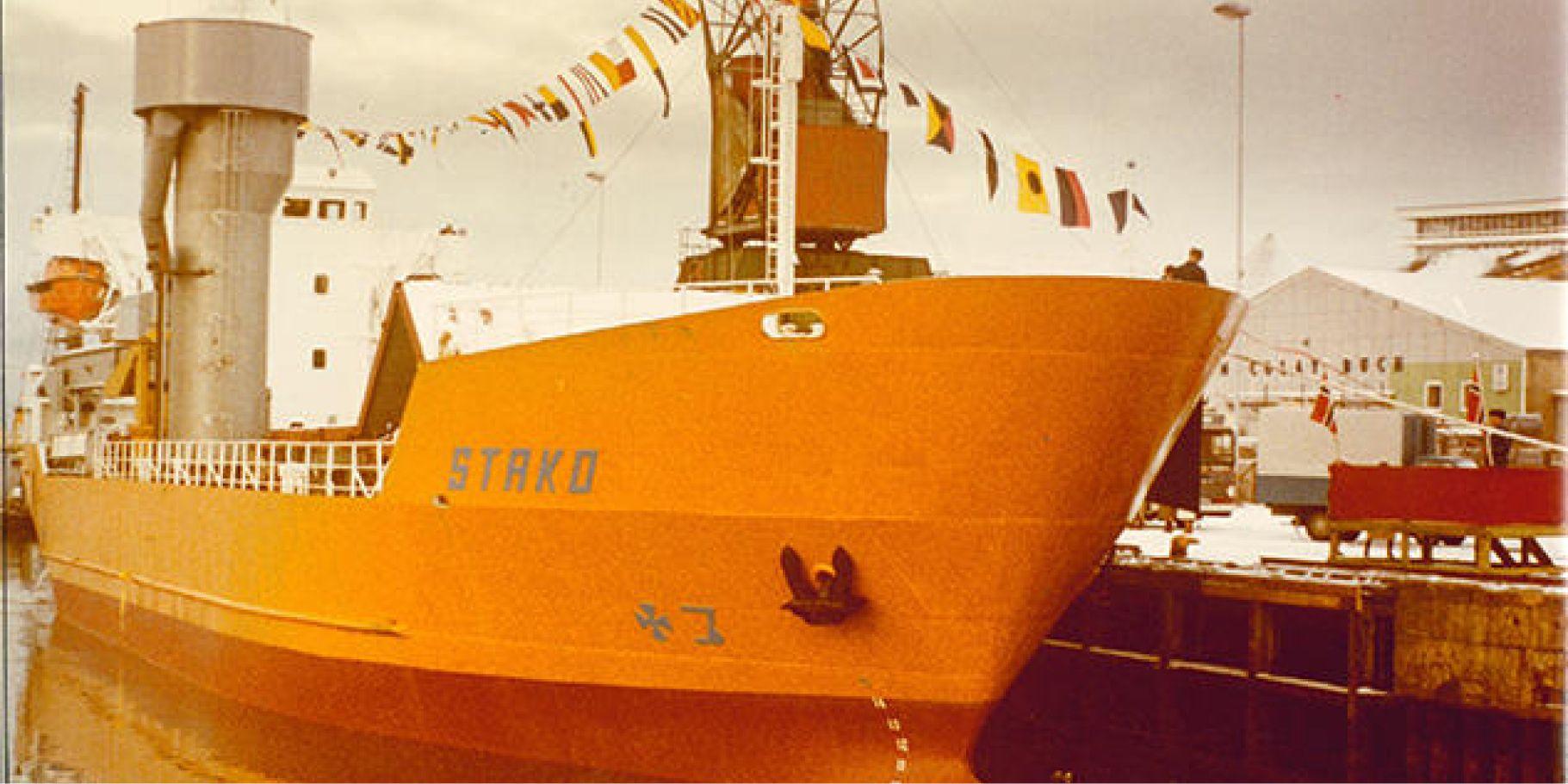
Grain transport agreement
TTS (Torghatten Trafikkselskap) secured a long-term agreement for grain transport with Statens Kornforretning (state owned grain company). The specialized ship "Stako" was contracted, and TTS became the manager of the new vessel, co-owner in the joint shipping company, and responsible for crewing the ship. History would show that this venture was only a ten-year endeavor for TTS. In 1991, the vessel was taken over by Bergen Shipping.
1981
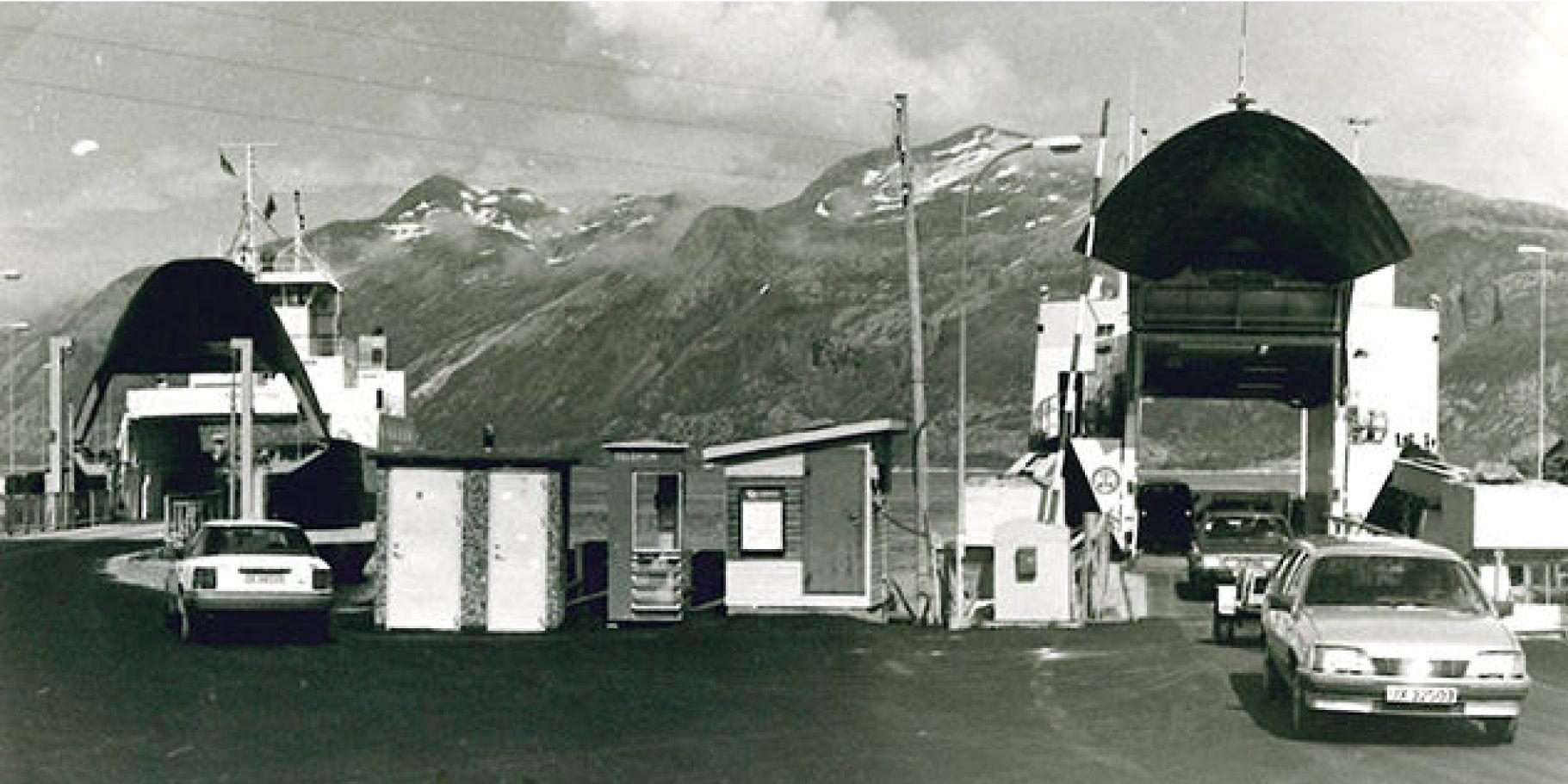
From Horn to Vega
The pattern of high-speed boats and ferries in the region changed in 1981. First, the new high-speed boat route between Rørøy-Brønnøysund and Rørøy-Tjøtta was put into operation with the newly acquired "Torgtind." Then, the ferry connection between Horn and Rørøy started, marking a new era for ferry traffic to Vega. Horn ferry terminal served two connections, one to Vega and one to Vevelstad Municipality.
1983
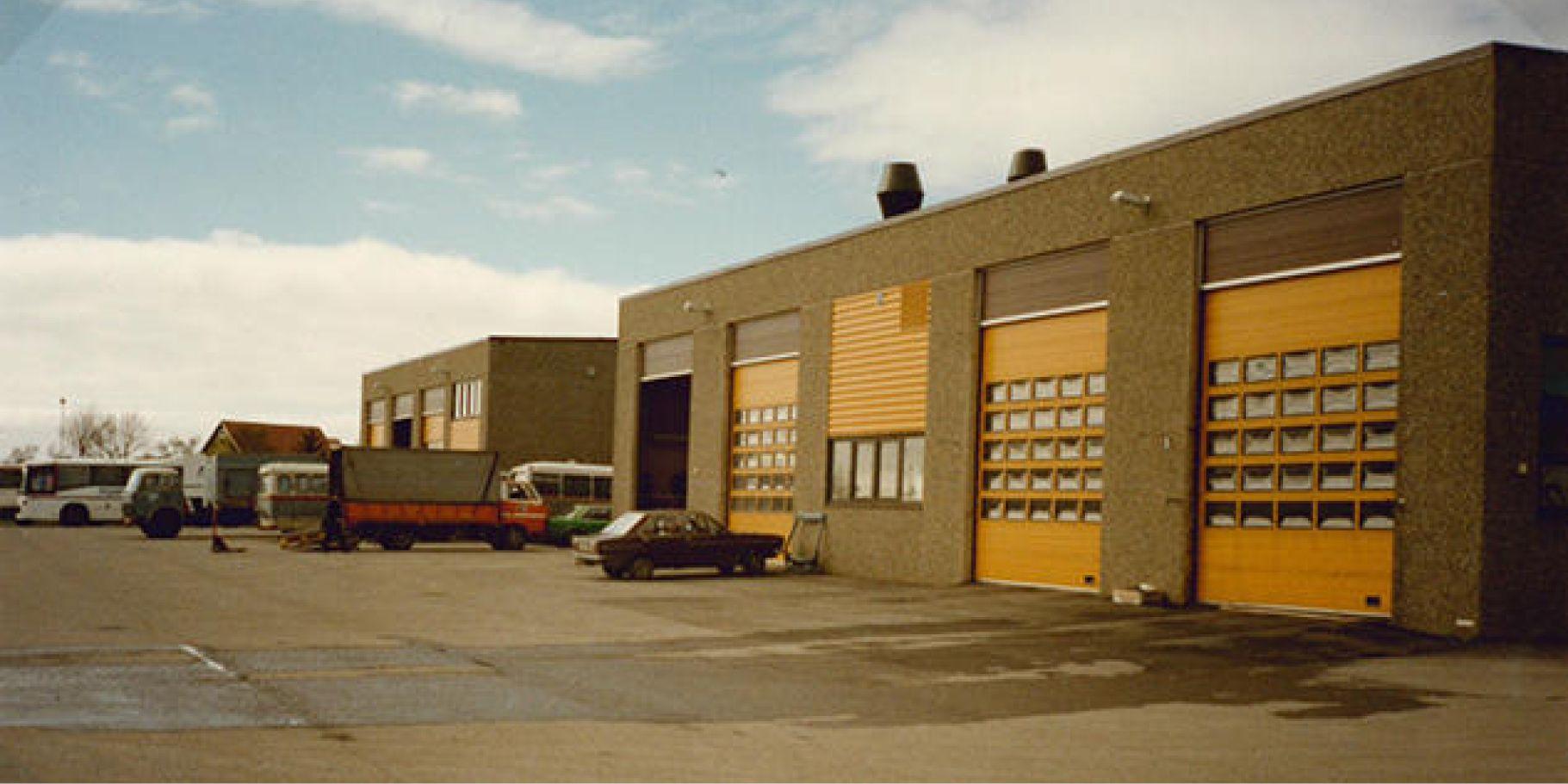
Repairshop
The significant growth in land-based transportation in the 1970s and 1980s led TTS to invest in a brand-new workshop building with a bus garage and driver's room. The new workshop building was constructed at Salhus. TTS Car and Tire Center became a reality in 1995, offering services to external customers as well.
1987
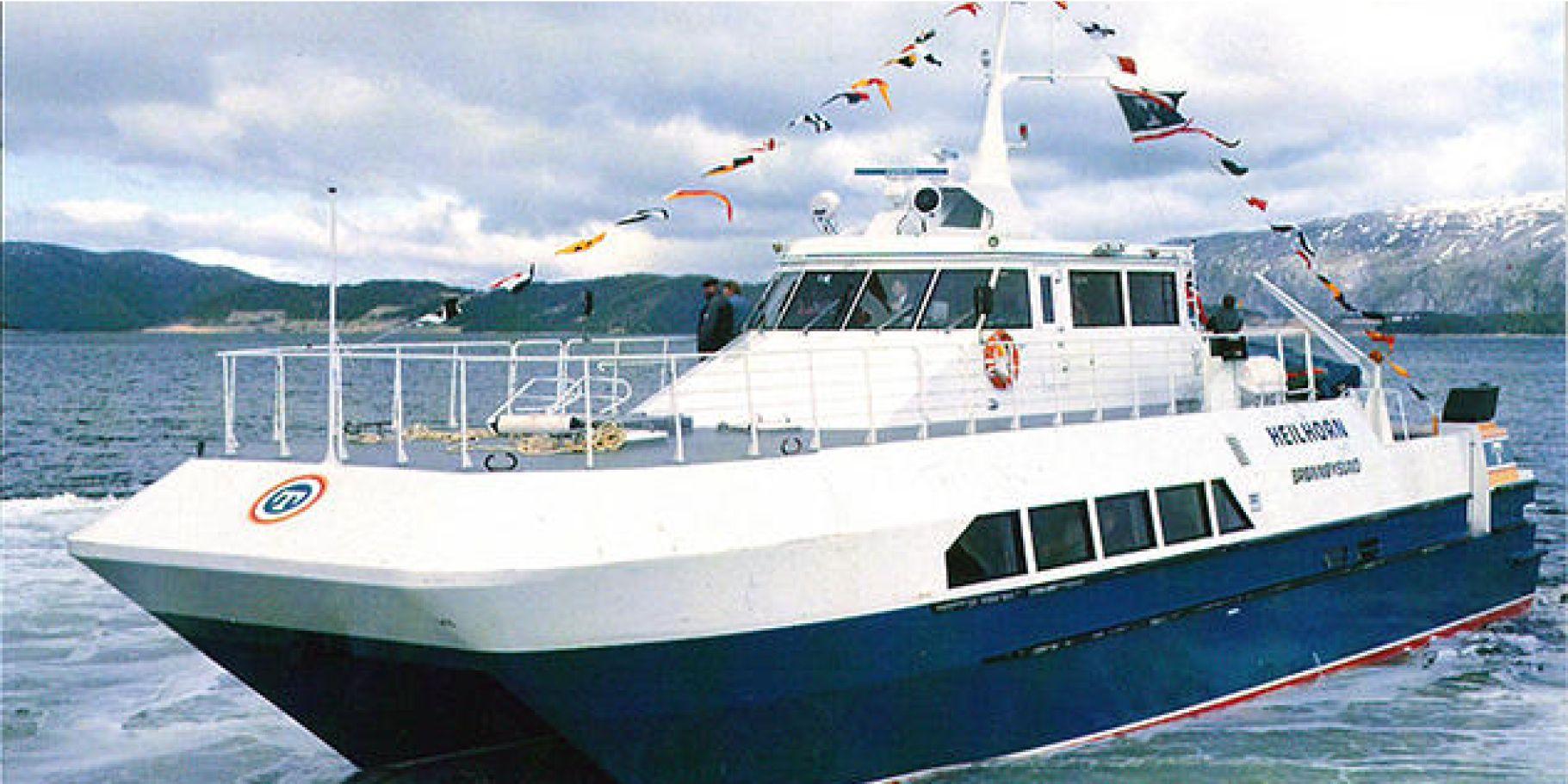
The "Community Boat" arrives
The term "Community Boat" was introduced in 1987 when Heilhorn started operating across Bindalsfjorden. The boat was a true innovation, combining being both a car ferry, a high-speed boat, and a cargo vessel.
1987
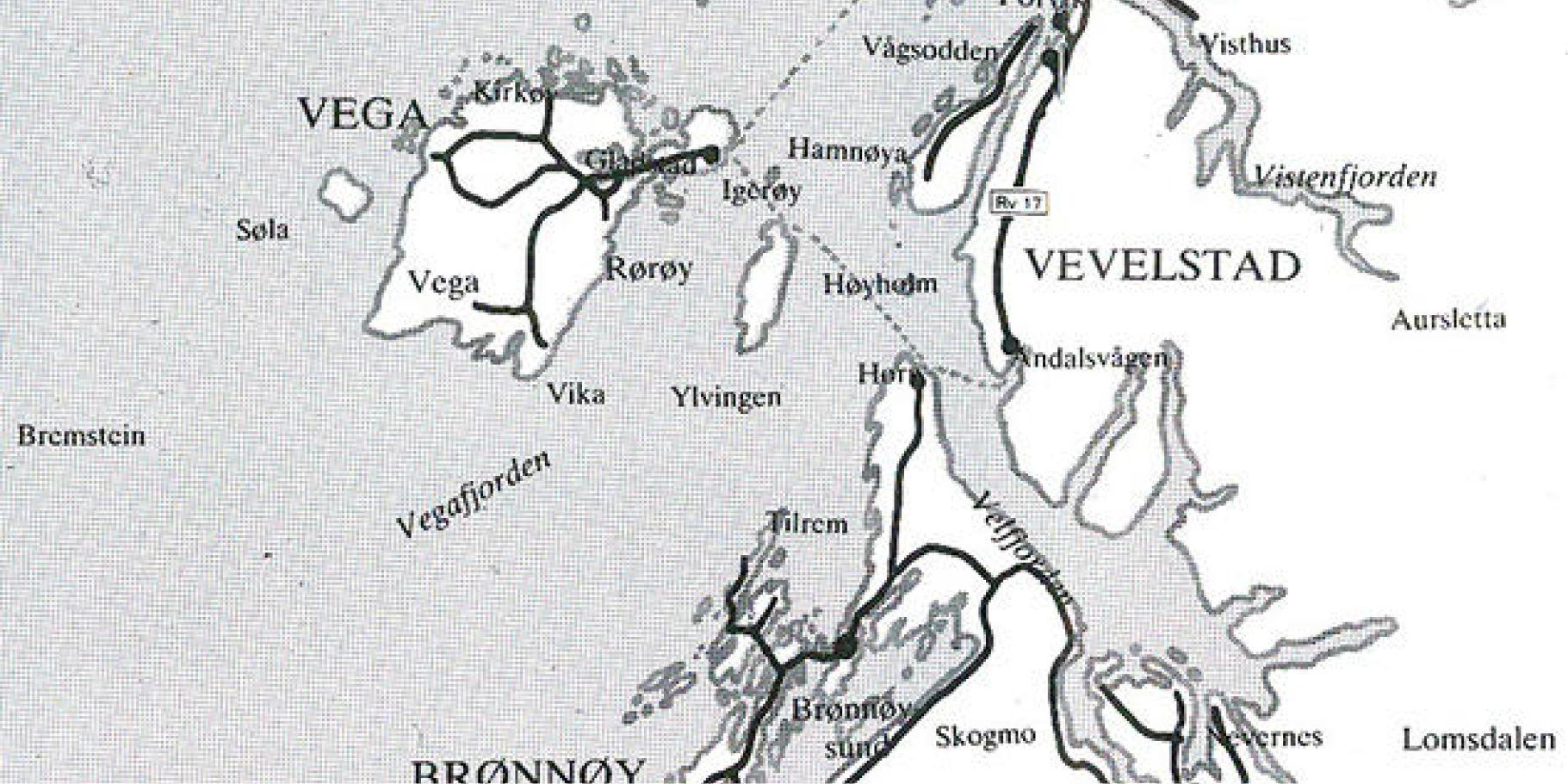
Putting Igerøy on the map
Communication to Vega has always been important for the company, and it was a significant event for both TTS and the local community when Igerøy ferry terminal opened on July 9 1987. This allowed the ferry to travel from Horn to Igerøy, reducing the travel time by 15 minutes. In November of the same year, another improvement occurred from Horn Ferry Terminal when the new "Torghatten," a 40-car ferry, could be put into service to Anddalsvåg. Five years later, the ferry was equipped with a tourist lounge on the top deck.
1987
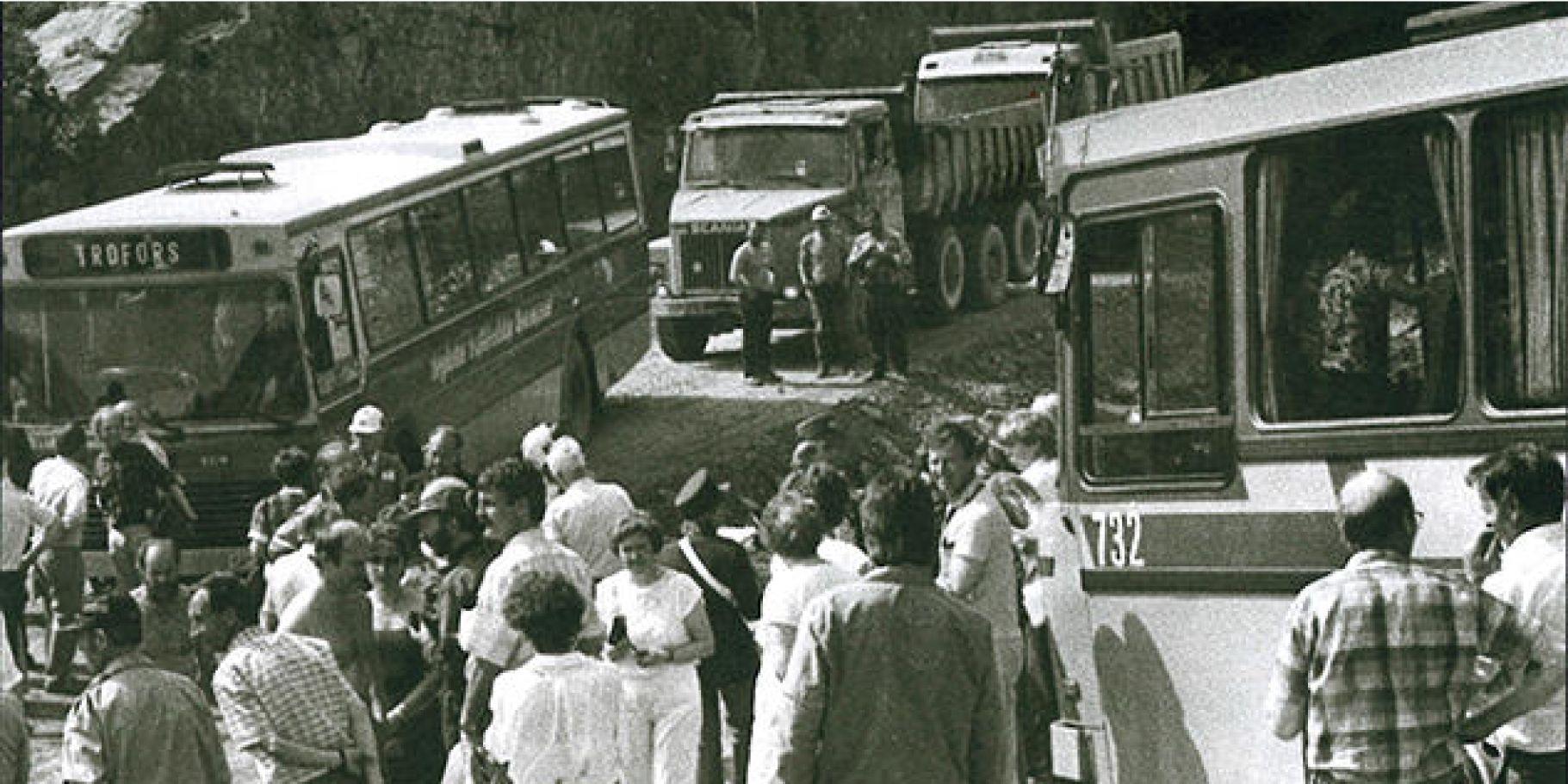
Here we see the first traffic through the Tosen Tunnel. This was truly a significant advancement for the region.
Tunnel in Tosen finished
The summer of 1987 was a crucial period for the transportation in South Helgeland. With the new Tosen Road and tunnel through the Tosen Mountain, new possibilities emerged for traveling to and from Grane and Mosjøen. TTS made significant efforts as a collaborator to realize the project and was awarded the Tosen Road Plaque for their contribution to the establishment of the Tosen Road. Starting from July 13, the Tosen Express became a reality, in coordination with Helgeland Bilruter. The previous year, a bus route to Grong had been opened.
1990
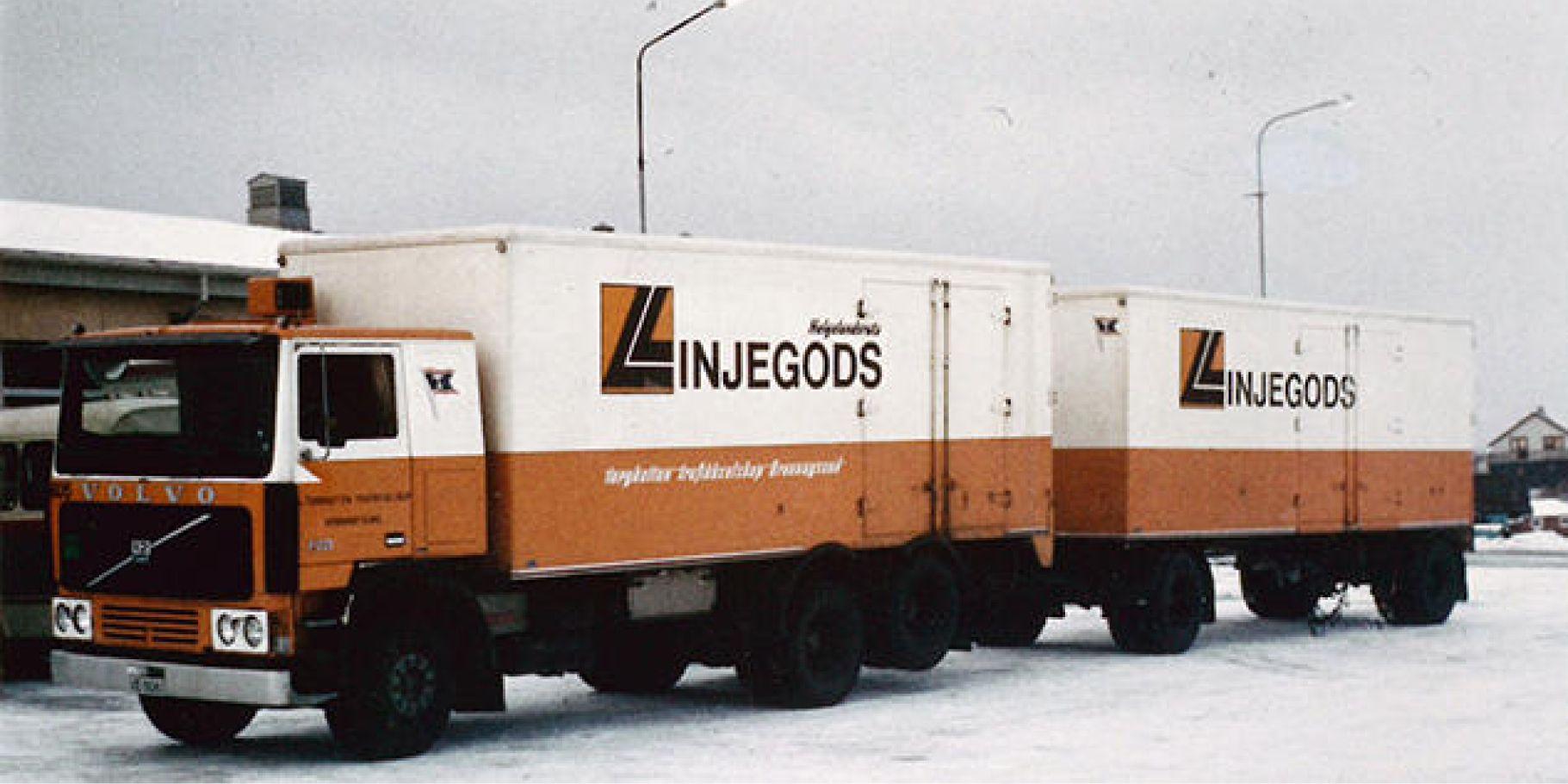
In 1990, the freight operation in the company is separated into two subsidiaries.
TTS becomes a Group
The freight operation within the company was separated into its own company through the subsidiary Holm Transport. In February 1990, Brønnøysund Harbor Terminal also started operating on Gårdsøya. TTS owns 90% of this joint-stock company.
1991
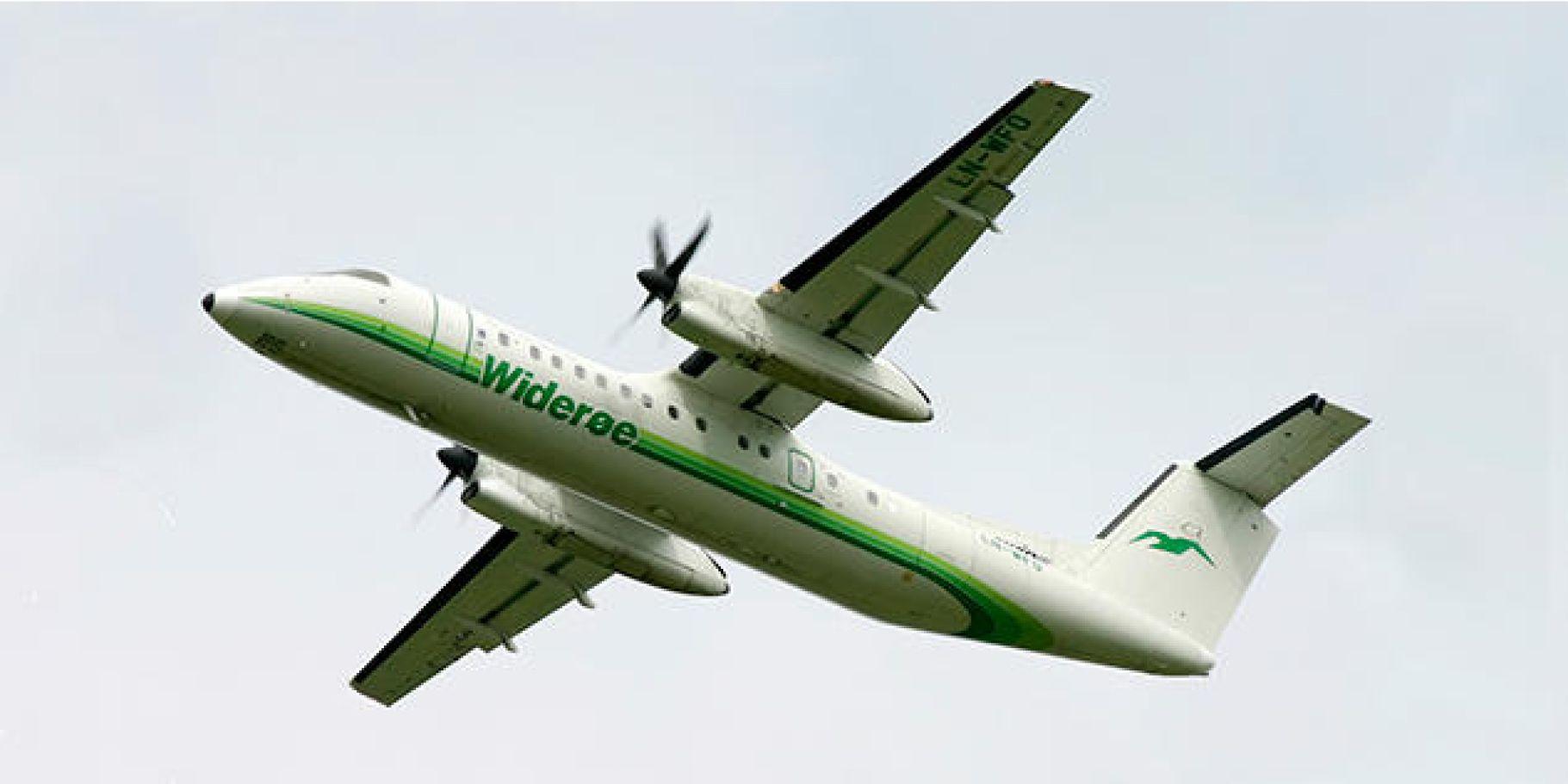
Entering the aviation industry
In 1991, TTS entered the aviation industry with an investment in Widerøe's Flyveselskap. These shares were later sold in 2002.
1994
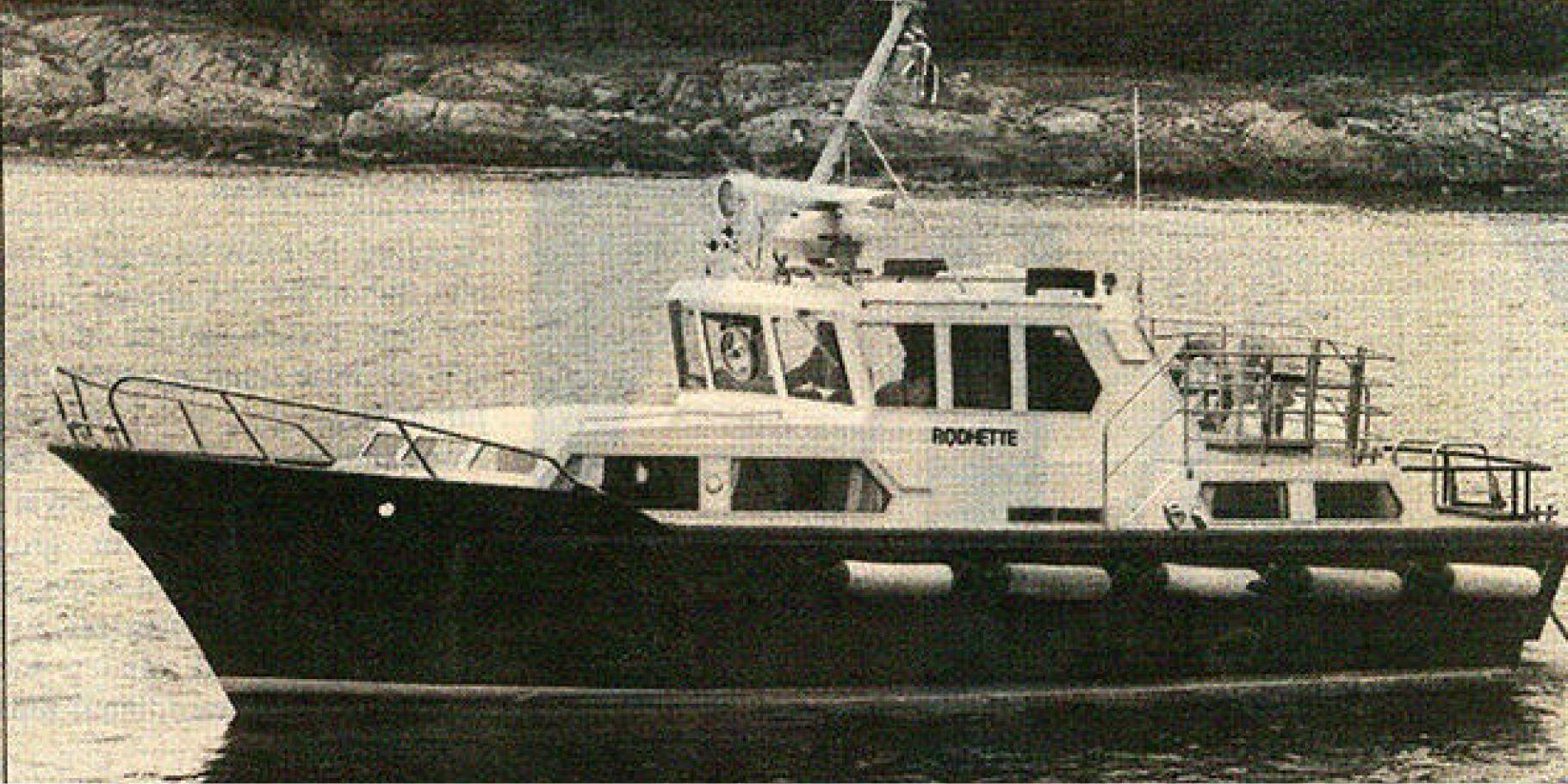
Newspaper clipping from Brønnøysunds Avis, July 19, 1994
First tendered route
Torghatten made history when they won the country's first tendered route, a high-speed boat route in Nordfold, Steigen.
TTS purchased a vessel from Sweden that was put into service on the route. It was named Rødhette.
At the time, Brønnøysunds Avis wrote:
"There is certainly no jubilant mood in Nordfold after it became clear that the area will be served by a smaller boat than before. The route that TTS will operate is also reduced compared to the previous setup. The tendering arrangement for this route is locally characterized as a communicative setback, without blaming TTS for it."
After a relatively short period, Rødhette was replaced with Steigfart. It was 37 feet long, traveled at a speed of 20 knots, and had seating for 20-25 passengers.
1998
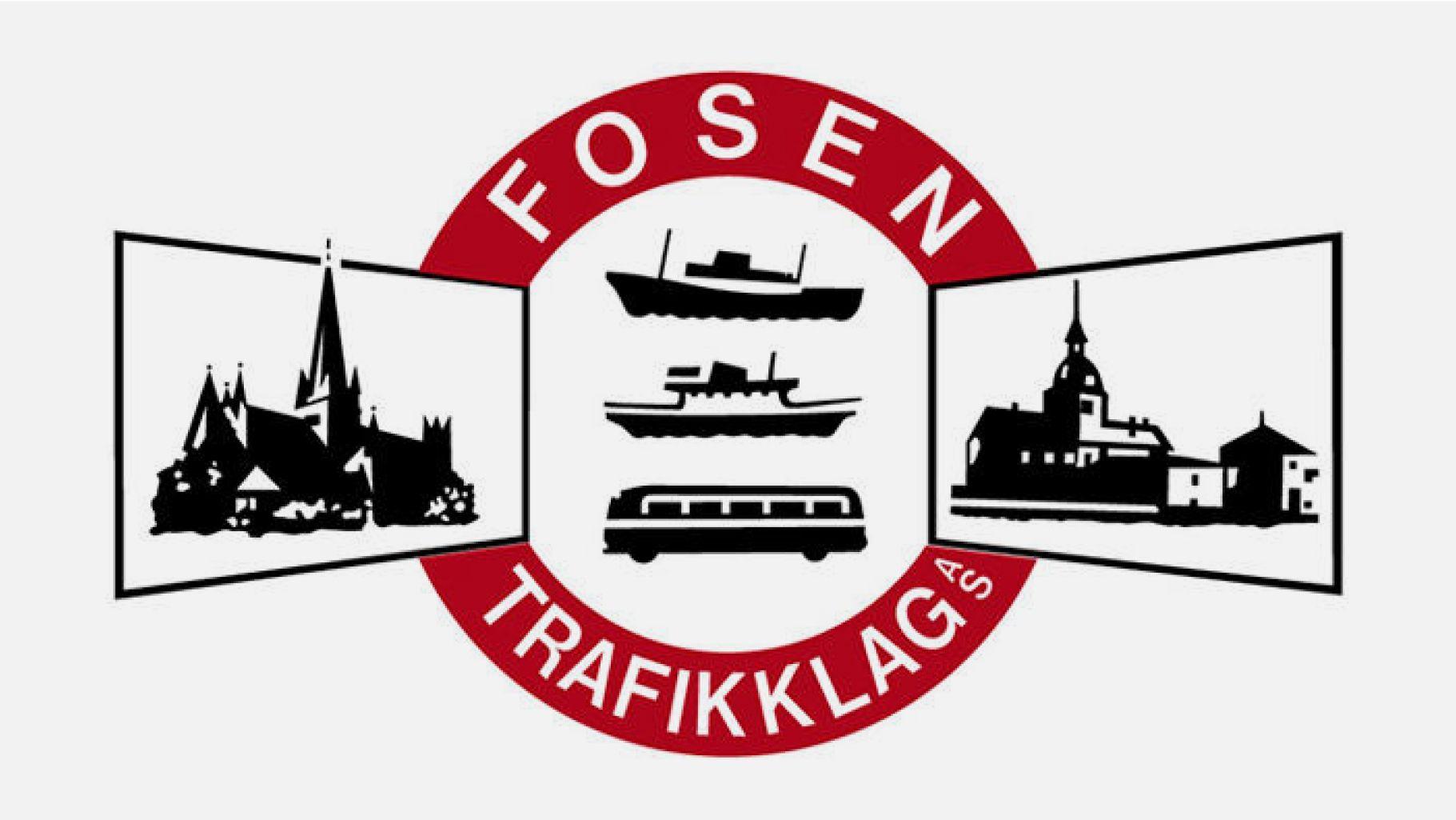
Fosen Trafikklag ASA
Fosen Trafikklag ASA became a subsidiary. Fosen Trafikklag ASA also had subsidiaries including Bastø Fosen, Trønderbilene, Fosen Verkstedservice, Bilruta Frosta-Åsen. Additionally, the company had a majority stake in Kystekspressen, Berg-Hansen Reisebureau Trondheim, and was a significant owner of Norgesbuss AS.
1999
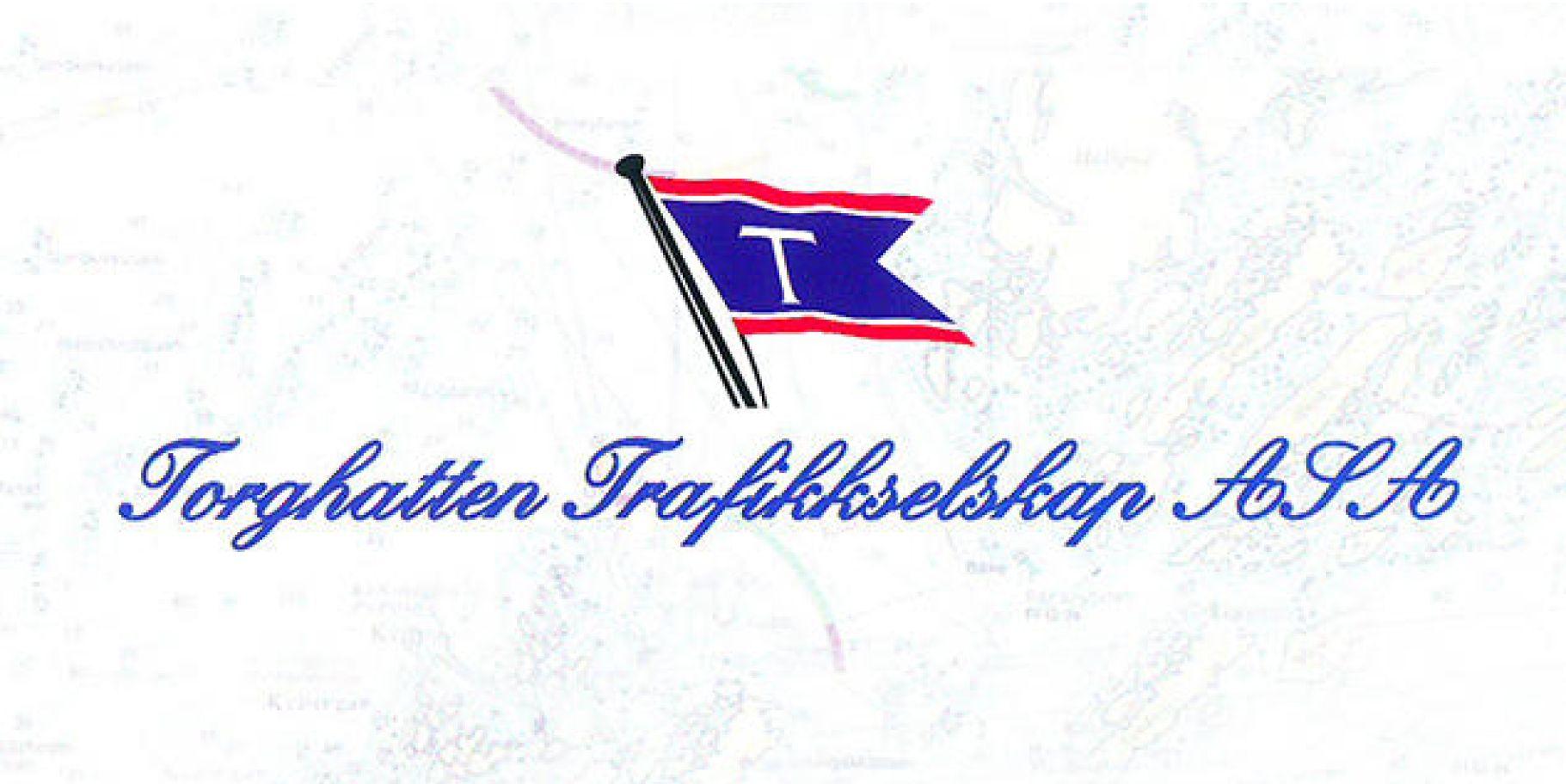
Name change
A/S Torghatten Trafikkselskap changed its company name to Torghatten Trafikkselskap ASA.
2003
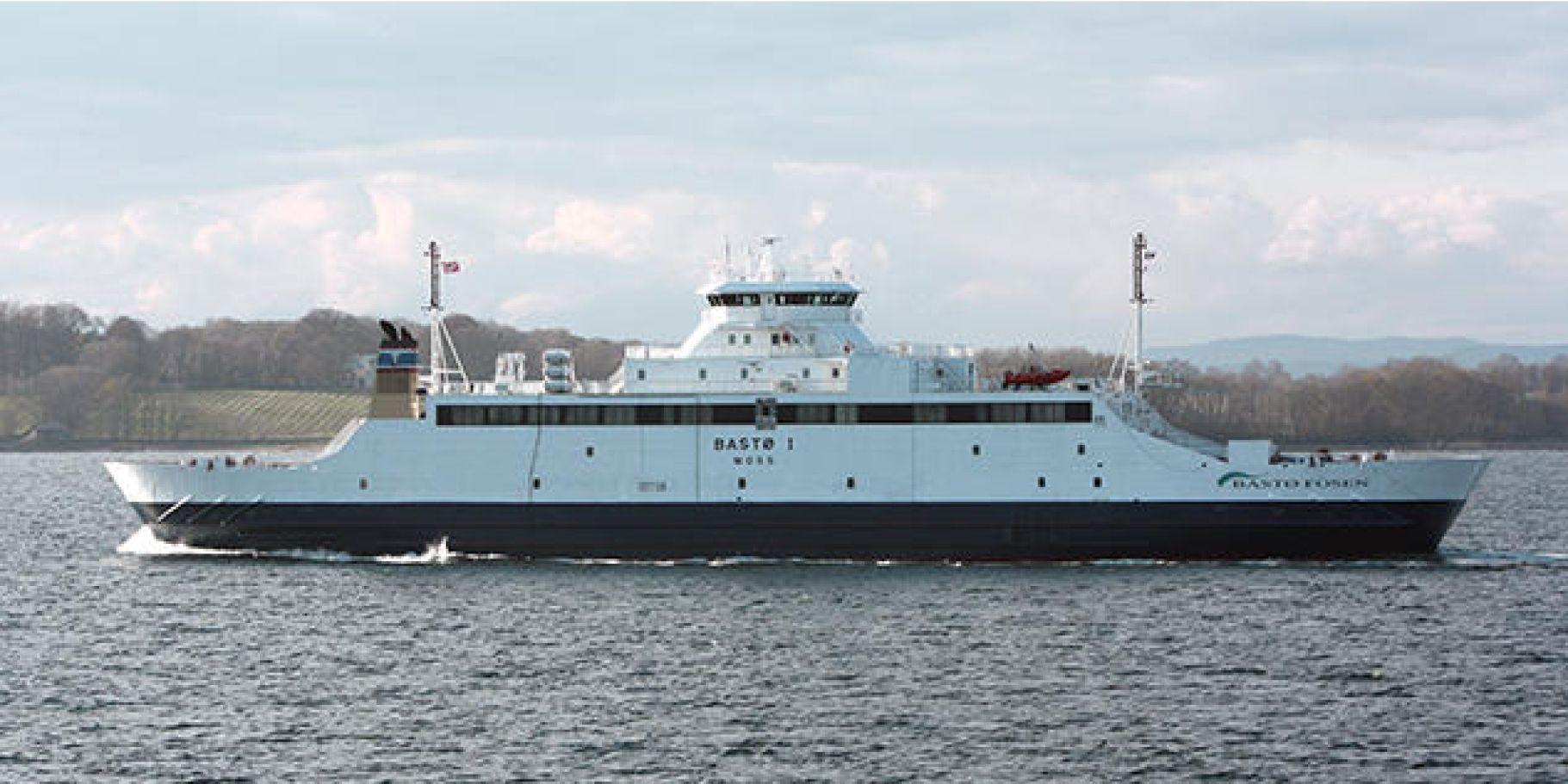
A significant victory
One of the most important victories for TTS as a Group was when Bastø Fosen received an extension of its operating contract across the Oslo Fjord for another ten years from 2006. The route between Horten and Moss is one of the country's most busy passenger routes.
2009
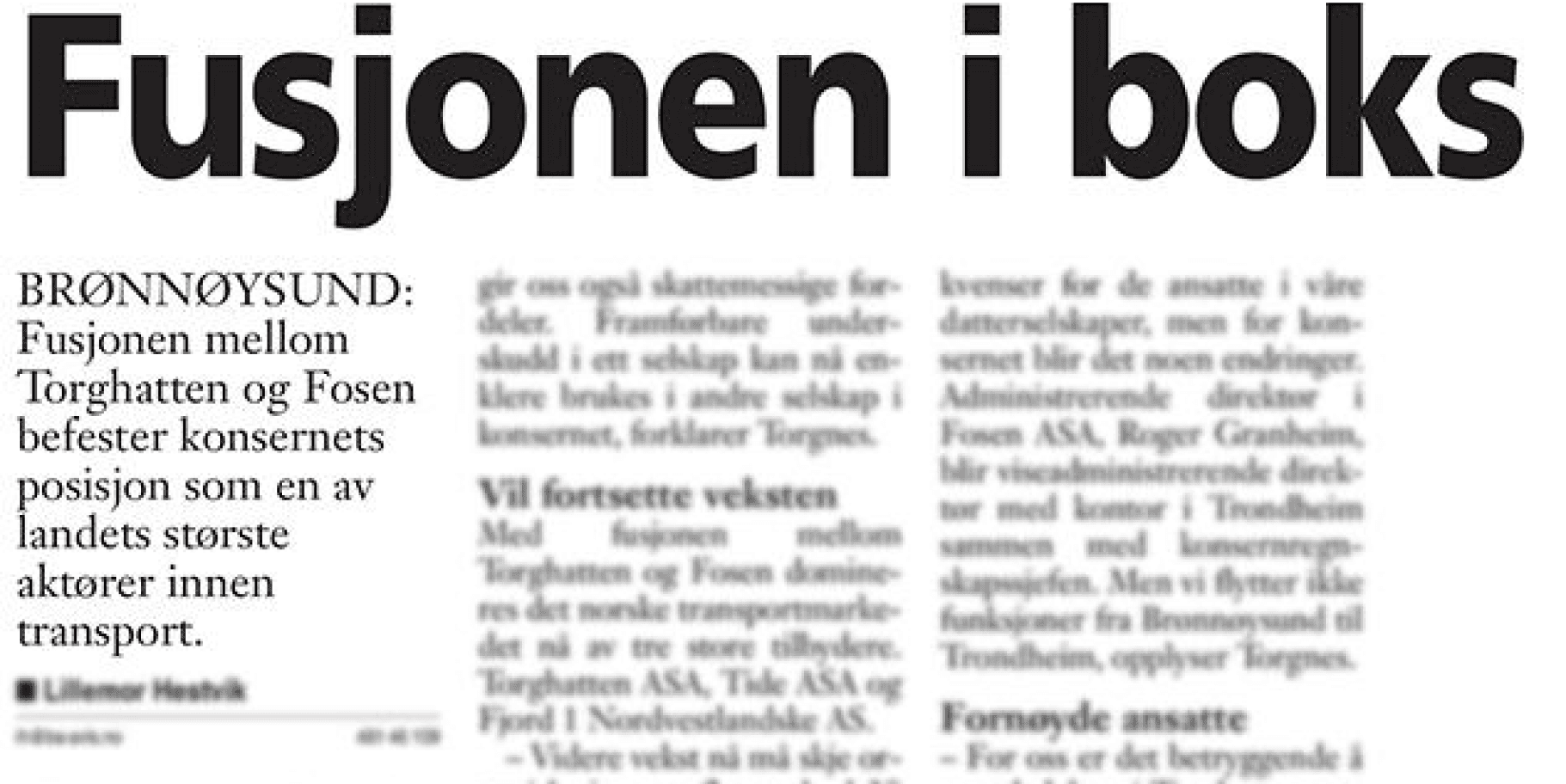
Newspaper clipping from Brønnøysunds Avis, December 18, 2009
Merger with Fosen Trafikklag
2009 became a milestone year in the company's history as Torghatten and Fosen Trafikklag merged.
2014
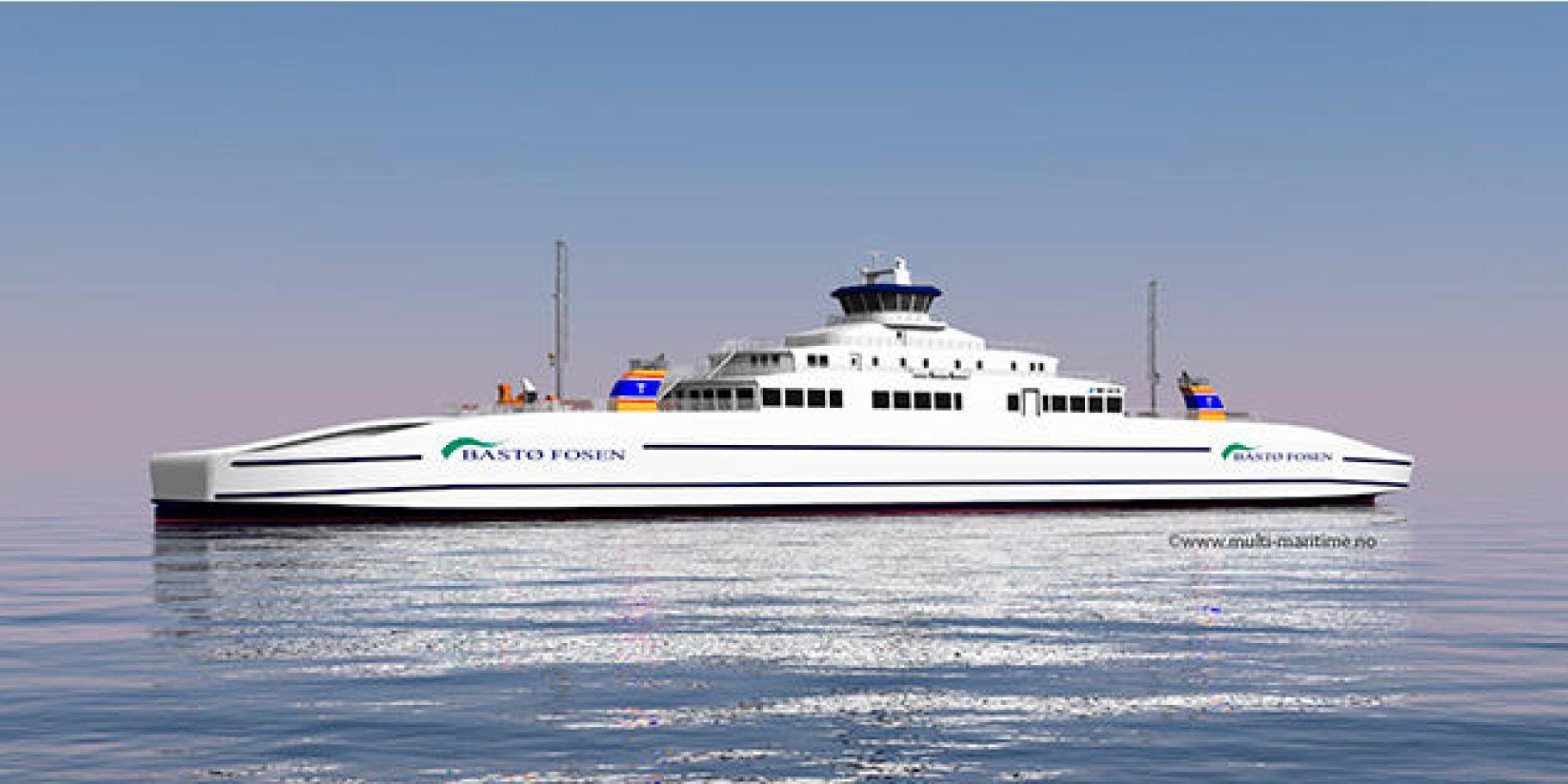
New contract Horten - Moss
In 2014, Torghatten, through Bastø Fosen, once again won the tender for the Horten - Moss route for the period from 2017 to 2026, with an option for an additional 2 years. Three new 200-car ferries were built, and starting from 2017, there would be a total of five 200-car ferries, with one in reserve. This increased the capacity of the route by 25-30%.
2020

EQT acquires Torghatten
The Swedish private equity firm EQT acquires Torghatten. In the wake of the acquisition, the aviation and bus operations are sold, and the company refocuses as a maritime transportation company, operating ferries and high-speed passenger boats.
2022
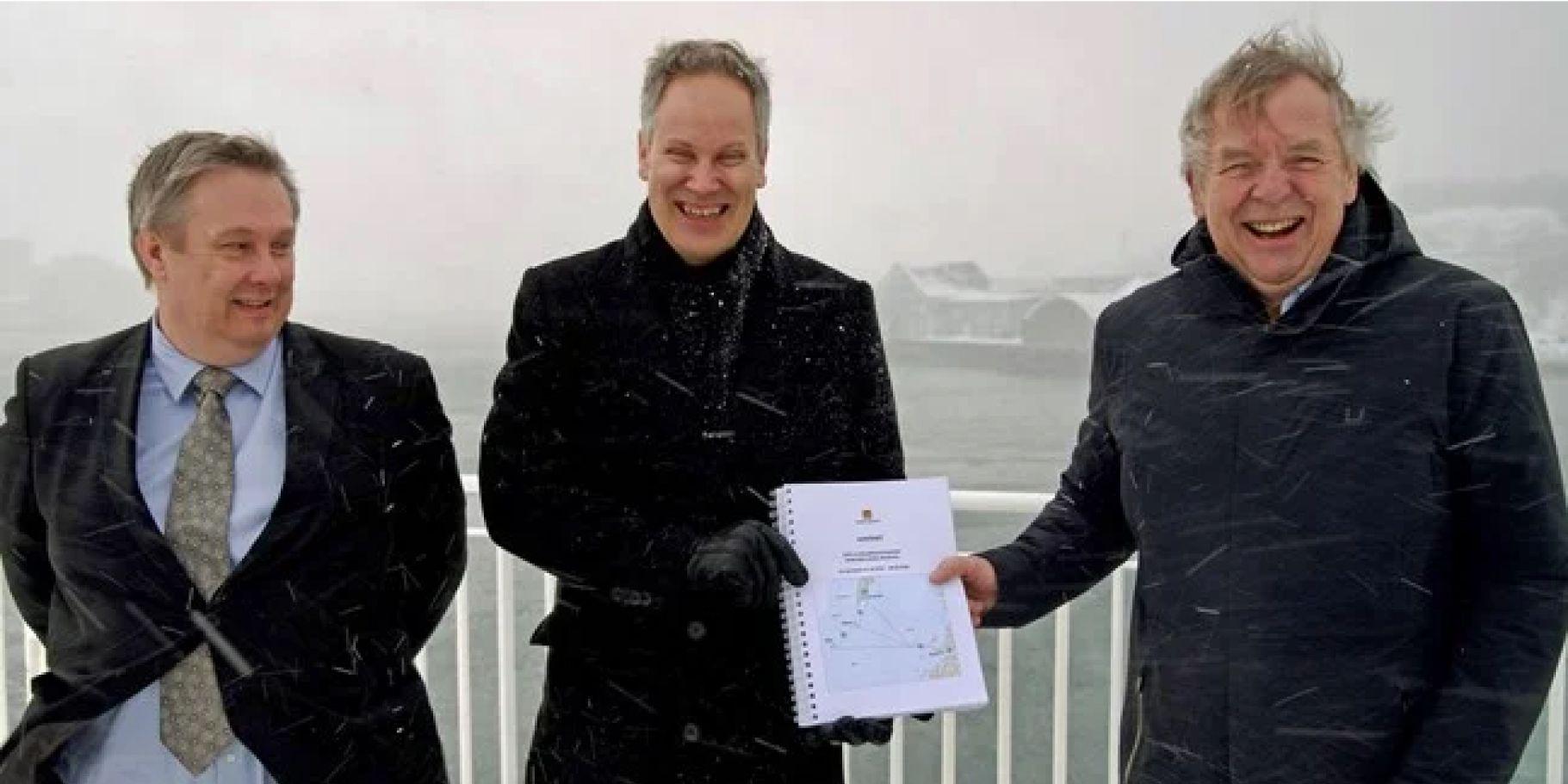
Hydrogen contract in Lofoten
The Norwegian Public Roads Administration signed a contract with Torghatten Nord to operate hydrogen-powered ferries between Bodø and Lofoten starting in 2025. The work leading up to the first ferry trip will have significant importance in Norway and the world, offering opportunities for local businesses.
2023
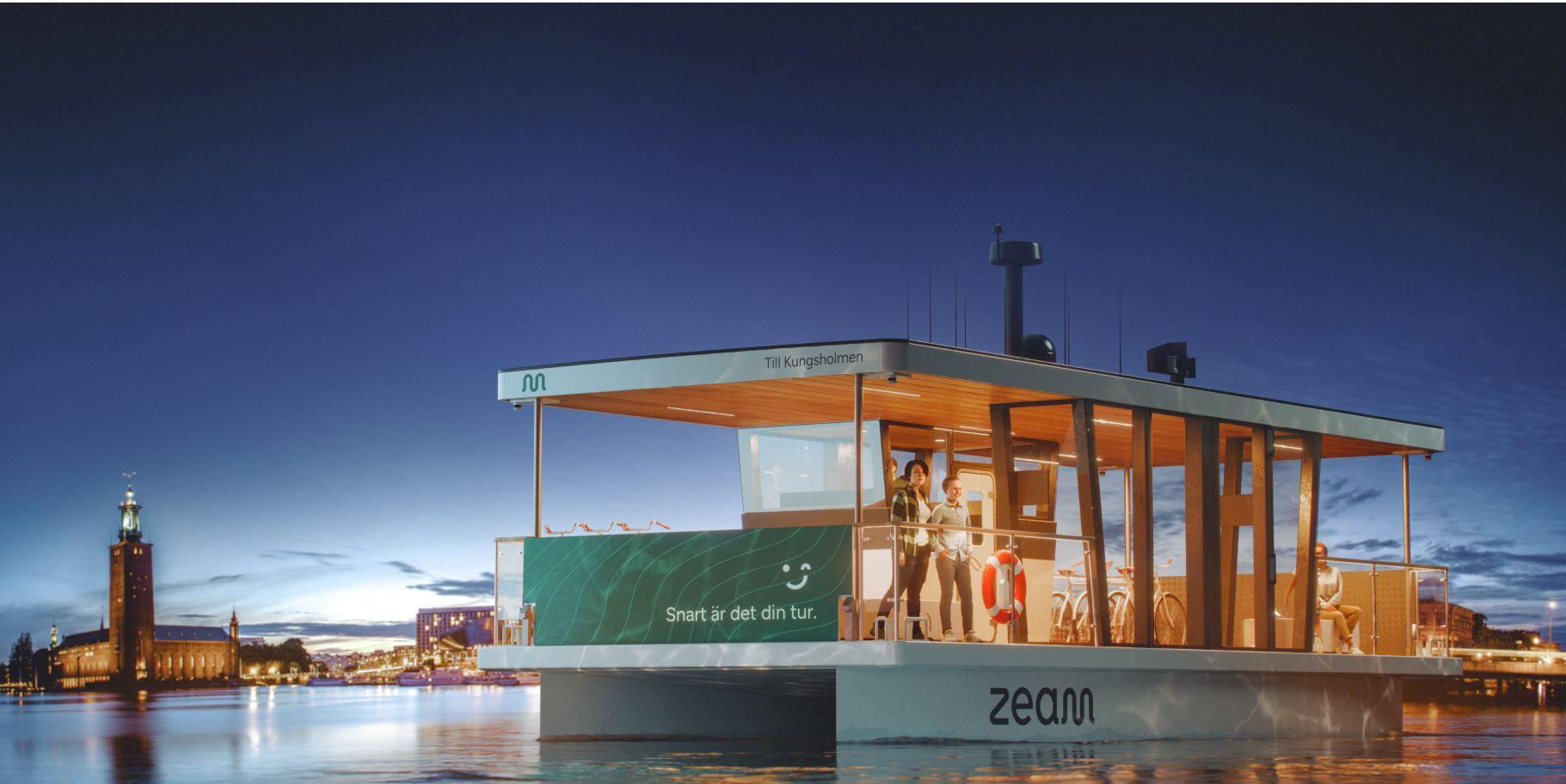
Zero-emission and autonomous passenger ferry
MF Estelle is the first of its kind, but the goal is to create a network of virtual bridges that contribute to urban mobility in an affordable, environmentally friendly, and safe way. Torghatten is leading the initiative, with technology provided by Zeabuz. The idea is to utilize waterways to reduce traffic and congestion on roads.
When the zero-emission, electric, autonomous passenger ferry "MF Estelle" began transporting passengers on June 8 2023 in Riddarfjärden in Stockholm, it marked an event that will go down in history.